► Murray's T.50 fan car: the debrief
► Plus, lighter and harder T.50s track version
► £2.4m for T.50, £3.1m for T.50s
Gordon Murray's T.50 supercar has begun testing, marking a significant development on its path to production. As you'd expect, it was conducted by Murray himself – and he seems happy with the results.
'The XP2 prototype is currently running at considerably less revs than its 12,100rpm limit, yet the T.50 felt fantastic on my first drive. The car was responsive, agile and rewarding to drive,' he says.
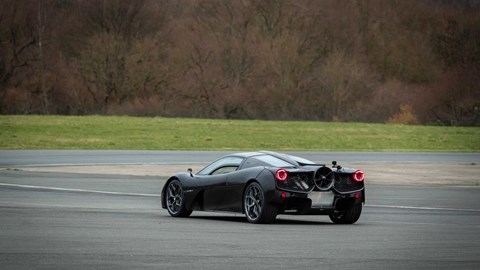
'It was a fantastic experience to be sitting in the centre of the car once again, with great all-round visibility, and I can see how much the owners will enjoy this experience. Obviously, there’s still a lot of development miles to be completed and many more prototypes to build. But the trajectory of the T.50 development is where we want it to be.'
Keep reading to find out more about the T.50.
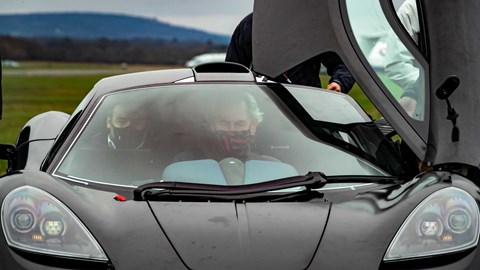
Gordon Murray's T.50 road car: the full CAR debrief
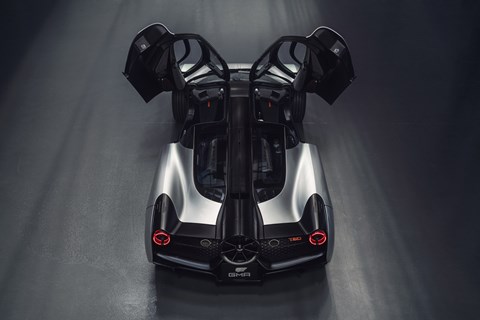
Gordon Murray Automotive has finally pulled the covers off its T.50 hypercar – and there’s certainly more than a passing resemblance to the McLaren F1. Powered by a 654bhp 3.9-litre naturally-aspirated V12 and weighing in at less than a tonne, the T.50 has been designed as a celebration of Gordan Murray’s 50-year career and promises to be ‘the most driver-centric supercar ever made’.
The 100% bespoke engine shares none of its parts with any other vehicle and is just 3.9-litres in displacement. Taking inspiration from many sources but particularly the 3.3-litre V12 of the Ferrari 250 GTO, the tiny engine produces 164bhp per litre.
At 986kg, it'll be one of the lightest cars on the road – but with 654bhp – it'll also have one of the best power-to-weight ratios. For context, the 2020 Porsche 911 Turbo S has around a 375bhp per tonne power-to-weight ratio.
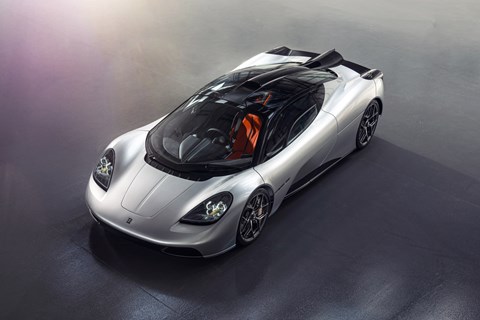
Every area of the car has been subject to a strict weight-saving process. The Cosworth V12 at the centre of the T50 weighs less than 180kg, making it more than 60kg leaner than the BMW-derived V12 of the McLaren F1. This lightness aids response – GMA claims it will rev from idle to its 12,100rpm redline in just 0.3 seconds.
McLaren F1: CAR's original 1994 road test
Yet it's not all about high-revving hooliganism, as while maximum torque comes in at 9000rpm GMA claims 71% of that will be available from as low as 2500rpm. Despite this, the T.50 will come with two engine modes. The second will allow full revs, but the first will top out at around 9000rpm (‘Ferrari revs’ as Murray calls it) and deliver more low-end grunt.
The T.50’s six-speed Xtrac 'box is almost 10kg lighter than the McLaren F1’s and the pedal box is 300g lighter. What's more, the body panels themselves and the monocoque weigh in at a total of less than 150kg.
'Designing a lightweight sports car does not come from specifying exotic materials alone,' says Murray. 'It comes from a state of mind, from absolute focus and control, and from a deep understanding of lightweight, optimised design.
'Today, the enjoyment of driving has been lost as so many supercars only come "alive" at the upper ends of their performance capabilities. Chasing a top speed only adds weight (notably through ever-more powerful engines), so the future of true performance cars lies in shedding weight intelligently.'
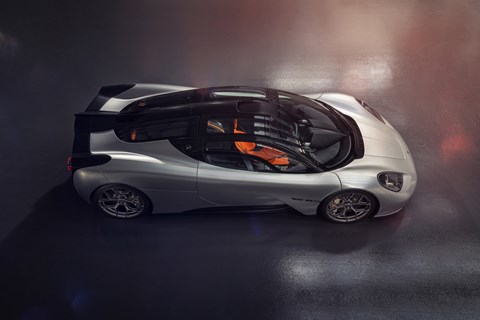
One part of the car that’s not completely bespoke, however, is the tyres. Riding on Michelin Pilot Sport 4S (295/30 R20 front, 235/35 R19 rear), the T.50 avoids the stickier compounds that most supercar makers opt for and makes do with a notably smaller cross section).
Murray explains that ‘the size comes directly from the weight of the car, we simply don’t need big tyres. This car is not about chasing numbers. Most people will put a softer compound on to get a slightly better 0-60mph time. We know this is going to be quick, so it’s better to fit something that is more sensible for everyday use.’
'It's always annoyed me that no one has done an F1 since the F1,' says Murray, aware that the sentiment could be construed as a lack of modesty. 'I know it sounds big-headed, but nobody's done a pure, lightweight, focused driver's car since – the T.50 will be better in every way.'
All 100 T.50s will be built in 2022. 'Given the costs, this could be the last great analogue supercar,' muses Murray. 'I've driven all the latest supercars. They're fantastic, but they don't involve you in any way, shape or form. Get back into an F1 and the hairs on the back of your neck stand up. T.50 will do the same.'
The aero
As shown by the official images, the T.50 is dominated by a 400mm ground-effect fan controlled by a 48v motor. By controlling the airflow underneath the car, this allows the bodywork to have far smoother lines than on many other high-downforce supercars. Said ground-effect fan has been developed using Racing Point F1 team's windtunnel using 40% models, and comes with six settings, all conducting the car’s moving aerodynamic surfaces.
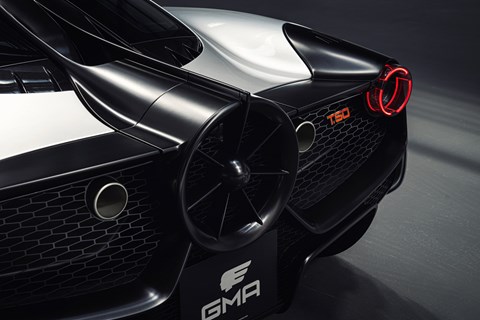
Auto mode responds to driver inputs, while Braking mode doubles the level of downforce using the fan – and deploys the rear aerofoils like an airbrake. This shortens the braking distance of the T.50 by 10 metres.
High Downforce mode will increase the amount the car is forced onto tarmac by 30% – so ideal in twisty bits, while Streamline mode reduces drag by 10%, eases off the downforce and increases top speed and fuel consumption. Underbody ducts are shut, and the fan increases the trailing wake of the car, creating what Murray calls a ‘virtual longtail.’
Finally, a V-max mode works just like Streamline mode, but takes top speed over consumption and gives the car a 30bhp boost using the 48V starter motor.
The T.50’s engine
It's going to be quite an engine: 'Put simply, the bespoke engine in the T.50 supercar will be the highest-revving, highest power density, lightest and fastest-responding naturally-aspirated V12 ever made for a road car,' say its makers. That's fighting talk.
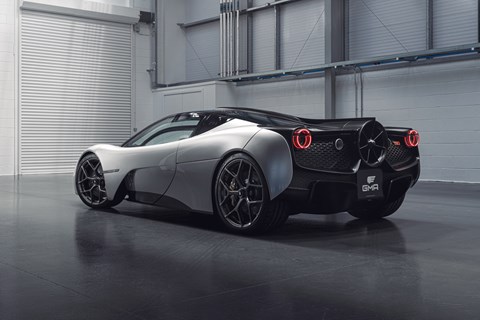
Engine sound, too, is an obvious priority. Taking (and improving on) technology from the McLaren F1, the T.50 features Direct Path Induction Sound that helps to channel the V12’s vocals into the cabin. Cleverly, though, the cold-air ram induction intake that helps to amplify noise, is actuated on throttle angle rather than revs, allowing careful management of how raucous the engine is.
Bucking the trend of highly complex auto transmissions with seven or more speeds, the T.50 is exclusively available with a six-speed manual transmission developed by British manufacturer Xtrac. Coming in at 9.5kg lighter (80.5kg in total) than the unit in the McLaren F1, Murray’s target is clear – ‘I want this to have the best manual change ever’.
Inside Murray’s T.50
The T.50 is unashamedly driver-focused, yet that doesn’t mean there’s not space for two passengers to come along for the ride, too. And, while you may not associate hypercars with luggage capacity, the T.50 manages around 300 litres of space thanks to luggage carrying pods on the sides, a custom-built suitcase for one of the passenger seat and cubby holes that add up to 30 litres.
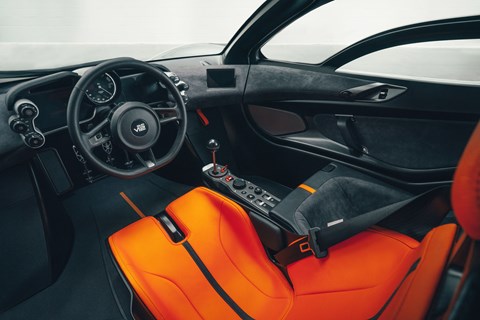
What’s more, the controls are a thing of carefully machined beauty. The switches, for example, are made out of aircraft-grade titanium and features optimum tactility for ease of use.
There are also two screens either side of the analogue rev counter, both of which are controlled by scroller dials on the otherwise plain steering wheel. Indicator stalks are banished, replaced by thumb buttons on the wheel spokes and paddles for the lights and horn – the idea being that you won’t need to take your hands off the wheel in order to get other drivers out of the way.
The T50s
Gordon Murray Automotive has upped the ante on its T.50 supercar with this: the T.50s Niki Lauda, revealed on the late racing driver’s birthday. It’s a track ready, even lighter and even more powerful than the ‘standard’ T.50. It’ll set you back £3.1m before taxes, and just 25 are being built after the T.50’s production run of 100.
All of the basic elements of the regular T.50 are present and correct: high-revving naturally-aspirated V12, super-light structure and central driving position. But every small detail provides more, or less, of what you need.
The carbonfibre monocoque remains, but the car has revised body panels for better aero. A delta wing arrangement at the rear works with the race-spec front splitter, adjustable diffusers and, of course, the ground-effect fan. Race-tuned suspension also features and the oil cooling systems have been moved to make way for a central fin. The Gordon Murray Automotive team will be on hand to spec each one individually, to ensure no two are the same and, to add to that, each one will be marked with each of the race wins Murray’s cars achieved in chronological order – starting with Kyalami 1974.

Power from the naturally-aspirated V12 has been boosted to 701bhp – almost 50 more than the standard T.50 – which can be upped to 725bhp with a RAM induction air box. The engine has revised cylinder heads and camshafts, a higher compression ratio of 15:1 and a new, free-flow exhaust that is unhindered by road noise regulations. The engine is also just 162kg – 16kg lighter than the T.50.
The driver still sits centrally inside but one seat is removed, allowing for a co-driver to sit in the passenger seat if required. The air-con, road car instruments and infotainment, carpets and storage areas have all been stripped out. The T.50s also has a ‘Formula One-style’ rectangular wheel.
All of that weight saving means the T.50s clocks in at a bafflingly low 852kg, and all of that additional aero trickery means the racer can generate up to 1500kg of downforce.
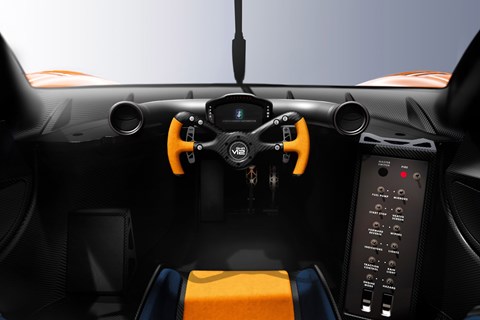
‘It was essential to me that the T.50s Niki Lauda is easy to live with and enjoy,’ says Gordon Murray, ‘you will own the car, you will be completely in control of where and when you enjoy it. My vision is that owners will take it to a circuit, check the tyre pressures, climb in, fire it up and have fun. That’s the way it should be.’
Production of the T.50s will start in 2023, after the 100-car production run of the T50 ends.